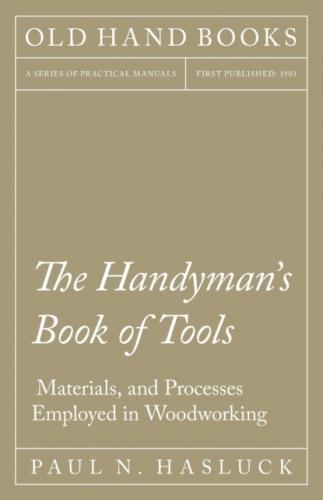Fig. 40.—Stock of Panel Gauge.
Fig. 41.—Stock of Panel Gauge.
Fig. 42.—Stock of Panel Gauge.
Fig. 43.—Wedge of Panel Gauge.
Fig. 44.—Wing Compasses.Fig. 45.—Compasses with Sensitive Adjustment.
IMPROVED SHOOTING-BOARD GIVING OBLIQUE PLANING.
A prominent fault of shooting-boards, as generally constructed, is that the plane used on the board loses its edge very quickly, especially on thin wood and when dealing with material of uniform thickness. The reason for this is that only a small part of the edge of the plane-iron is in use, and the same small portion constantly. All who have used edged tools know that an oblique movement cuts sweeter than a direct and forward movement; the edge employed in the actual cutting having a greater width than the shaving removed. The same thing is observable in a rebate plane. A skew-mouth plane not only keeps better up to its work, but the shaving seems to be more smoothly removed, and the cut surface has a better finish. In order to obtain these advantages, the shooting-board shown by Fig. 54 is offered. The planes used on a shooting-board should be sharpened squarely with a straight cutting edge; this is very important when shooting mitres, especially picture frames. If the iron of the plane is so sharpened, the distance between the surfaces on which rest the plane and the material worked upon need nor exceed 3/8 in.; nearly the whole width of the plane-iron is then available for use. Supposing that a shooting-board is required to take advantage of the oblique cut and the employment of a larger part of the edge, the wood operated on may be taken to be not more than 3/4 in. thick (for thicker work is more independent of a shooting-board): then the difference in level at the two ends of the shooting-board may be possibly as much as 1 1/2 in. This board (Fig. 54) is not drawn to scale, but may be made of any size suitable for the purpose for which the maker intends it, and it might be improved by making the incline adjustable with a pair of thumbscrews, or perhaps, preferably, by hingeing the two parts together at one end and employing a movable wedge and bolts at the other end for the purpose of adjustment.
Fig. 46.—Outside Callipers.
Fig. 47.—Inside Callipers.
Fig. 48.—Shooting Board.
Figs. 49 and 50.—Elevation and Plan of Improved Shooting Board.
APPLIANCES FOR MITRING.
The technical term mitre is applied usually to the angle between any two pieces of wood or moulding where they join or intersect, as in the case of a picture-frame. In this instance the joint would be a true mitre—that is to say, it would be 45°, or half the right angle (90°) formed by the two inner edges of the frame. Although the term mitre is generally understood to apply to a right angle, yet any angle, acute or obtuse, may be called a mitre.
Figs. 51 and 52.—Frame of Improved Shooting Board.
MITRE BLOCKS.
There are various appliances employed in cutting mitres, the simplest being known as the mitre block. The work is laid upon the rebate C (Fig. 55), and the saw kerfs A B serve as a guide for the tenon saw. The best form of mitre block is made from a piece of dry beech, about 16 in. long, 6 in. wide, and 3 in. thick. A rebate c is cut to about the size shown, care being taken that the angle is perfectly true. Lines A and B are set out to an angle of 45°, and they then are squared down the rebate and back of block. The lines are cut down with a tenon saw, and upon the accuracy of the sawing depends the value of the finished mitres. Fig. 56 is a section of the mitre block as commonly used by the joiner. This is merely two pieces of wood (deal, as a rule) planed up true and screwed or nailed together. This plan answers very well, as when it becomes worn and out of truth another can be made for a few pence. The block shown by Fig. 57 has a ledge on the bottom as shown; owing to the inward slant the work is more easily held.
Fig. 53.—End Elevation of Improved Shooting Board.
MITRE BOX.
Fig. 58 shows a mitre box which answers the same purpose as the block. This is made with three pieces of deal about 1 in. thick, nailed together at the bottom as shown. Mitre boxes for heavy work require a strengthening piece on top to hold together the sides (see Fig. 59), or even three pieces may be necessary (see Fig. 60); both these illustrations show pieces of moulding in position for mitre-cutting.
Fig. 54.—Shooting Board giving Oblique Planing.
MITRE SHOOTING BLOCK.
Figs. 61 and 62 show a mitre shooting block for shooting or planing the edges of stuff sawn in the mitre block or box. In Fig, 61 the bottom piece is of dry red deal, 2 ft. 6 in. long, and rebated. The top piece must be made of some hard material, such as mahogany or beech, by preference. It is planed up perfectly true, and cut at the ends to a “true mitre” (45°); it is firmly screwed to the bottom piece. It is an improvement to fix ledger pieces across the bottom, to keep the board from warping. In Fig. 62 the bottom piece is of two saparate
